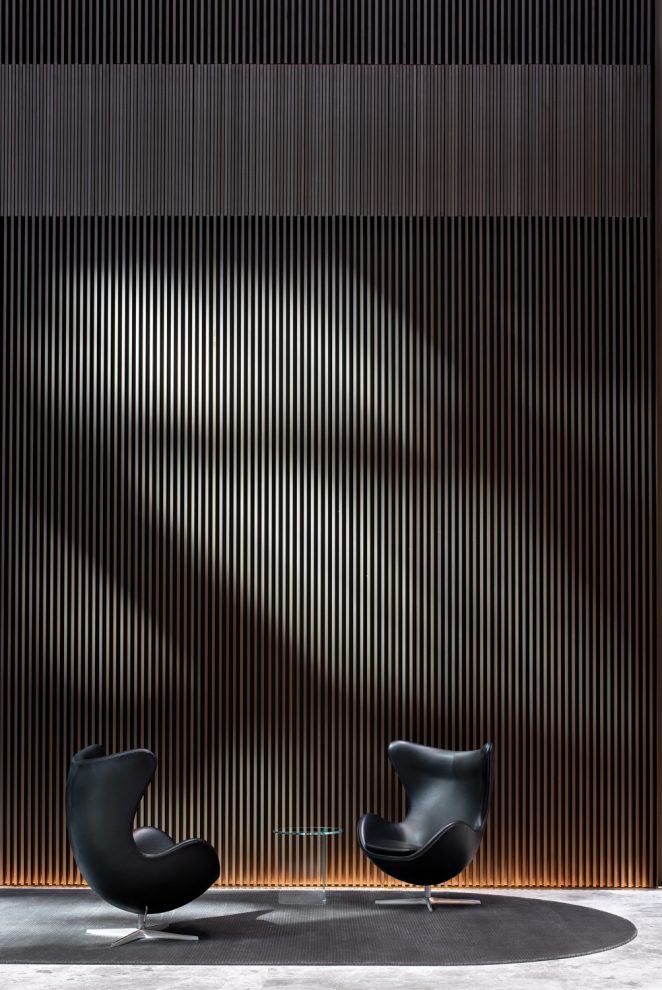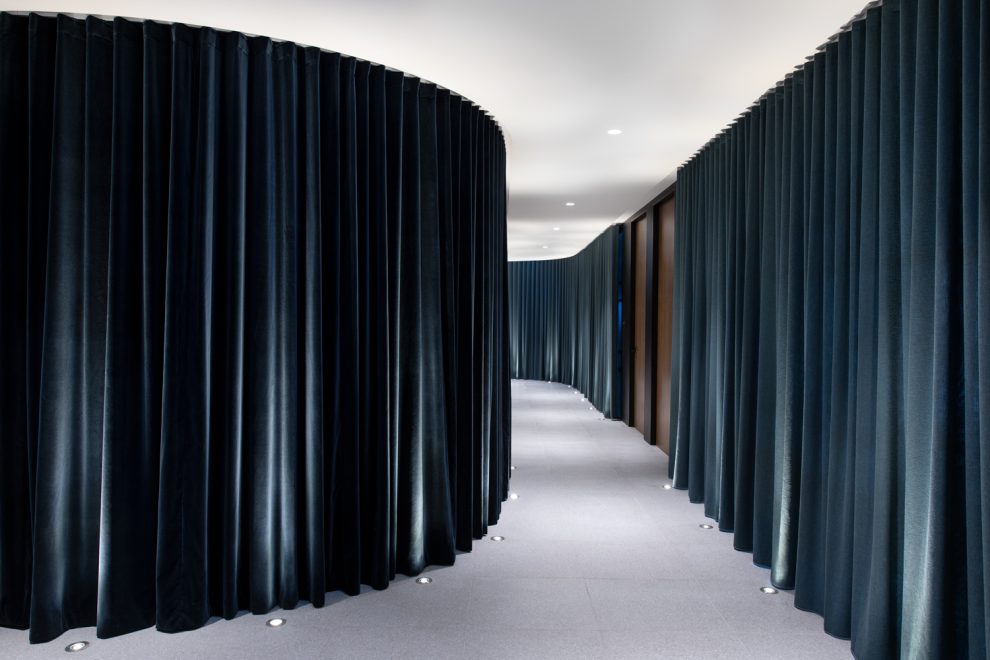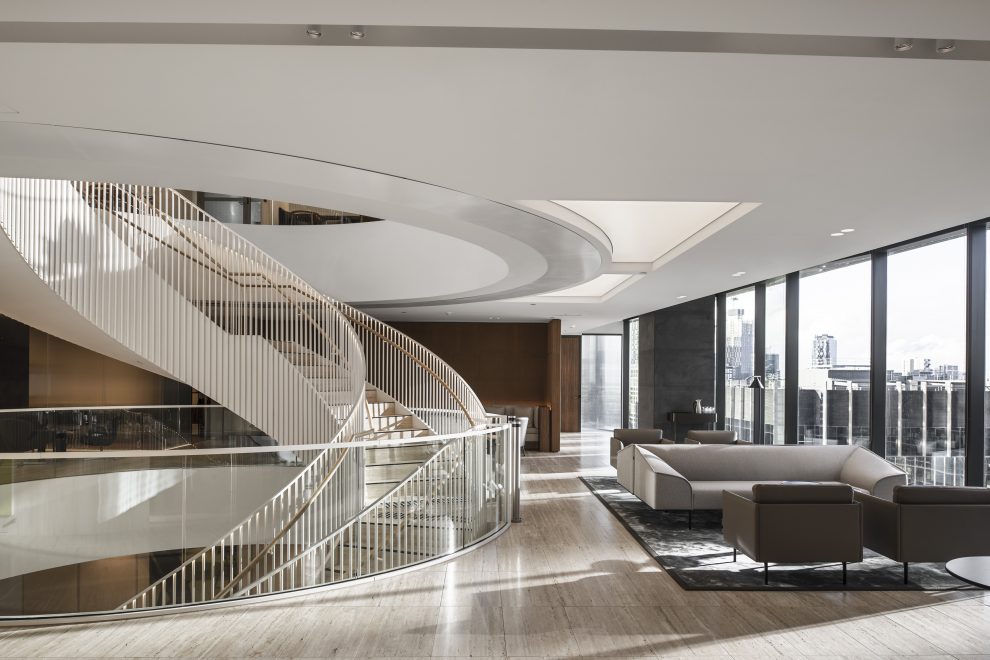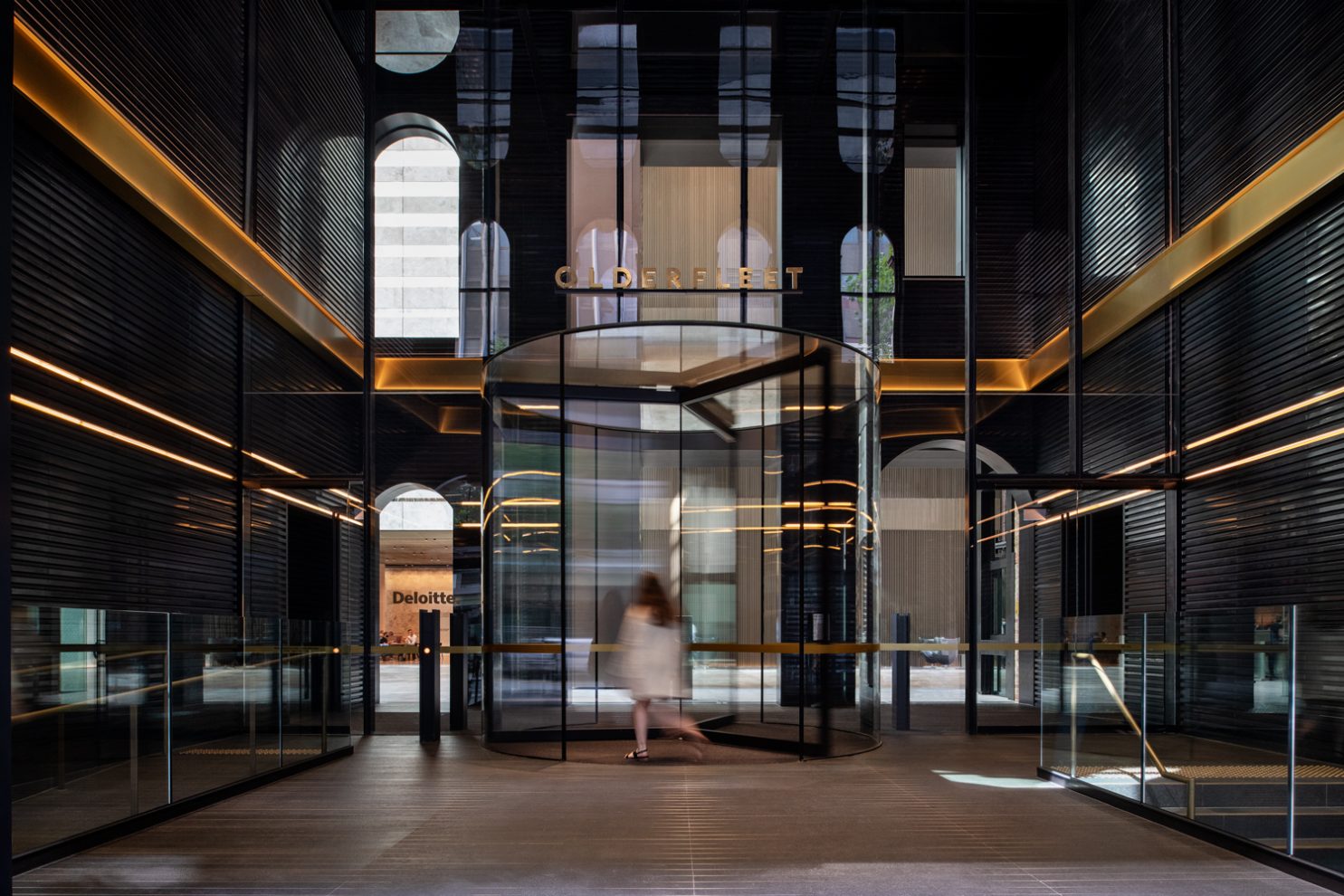
Designed by Grimshaw, 477 Collins Street is a 40-storey Mirvac development that sets a new standard for premium commercial buildings in Melbourne.
Set back from three heritage-listed buildings at 477 Collins Street, Olderfleet is a 58,000 sq m PCA premium grade office tower located in the centre of Melbourne’s CBD. The design draws consistent reference to its significant heritage context, bringing an attention to detail and spatial experience across all scales of the project.
Carr was appointed in 2017 to work with Grimshaw on the interiors, embracing the architectural vision of placemaking and bringing the legibility of the architecture to the ground through the interior experience.
“Extensive research into user experience and context informed our planning, material selections and overall approach” says senior interior designer An Bui.
This included carefully considering and mapping the entrance journey from Collins Street through the compressed heritage entry vestibule. Immediately setting expectations, the resulting main entrance brings people through an intentionally dark vestibule to instigate a sense of anticipation before opening out into a light-filled, voluminous lobby space with an atrium.
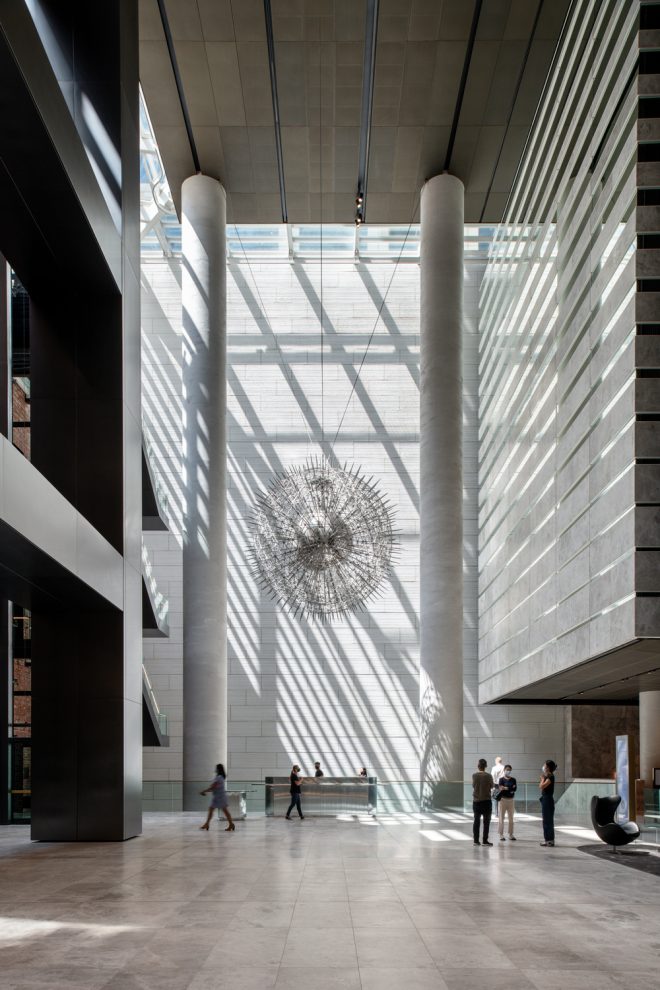
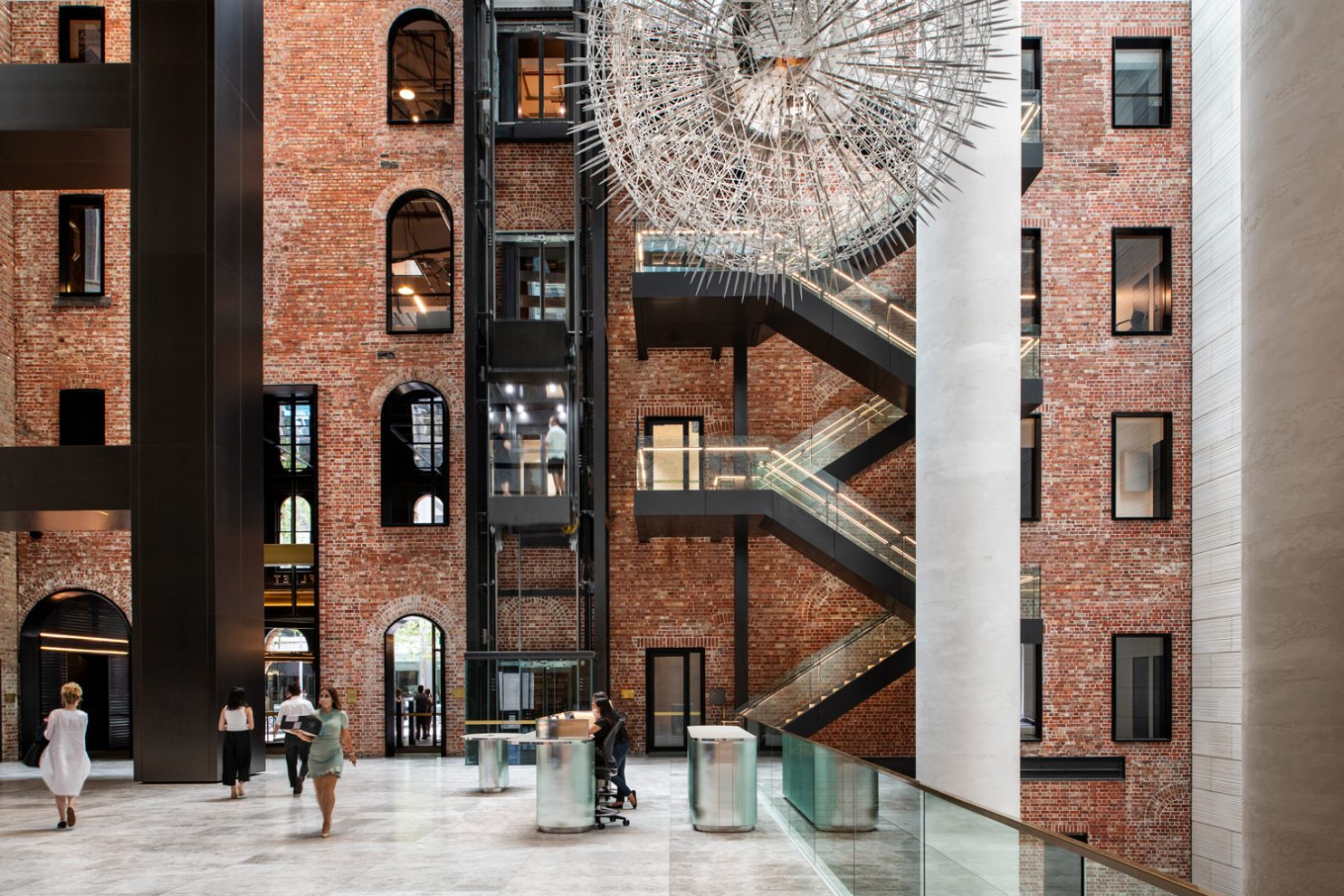
As An explains, “Once stepping into the main lobby you are emersed into an activated space with an inspiring acoustic buzz, with changing natural daylight effects and wonderful Workclub hosts.” In this way, the dark entry portal works to incite a reverence and acknowledgement of the heritage buildings, while unconsciously making people slow down as they transition from the frenetic street into the light-filled environment that is the lobby.
The constant connection between old and new is brought to life through the notion of the passage of time – a motif that is expressed in several ways. An existing clock face on the Olderfleet heritage façade is revealed and exposed within the lobby space as a clear reference point between old and new. The passing of time is also revealed through a significant site-specific art installation, which was conceptualised under the same brief.
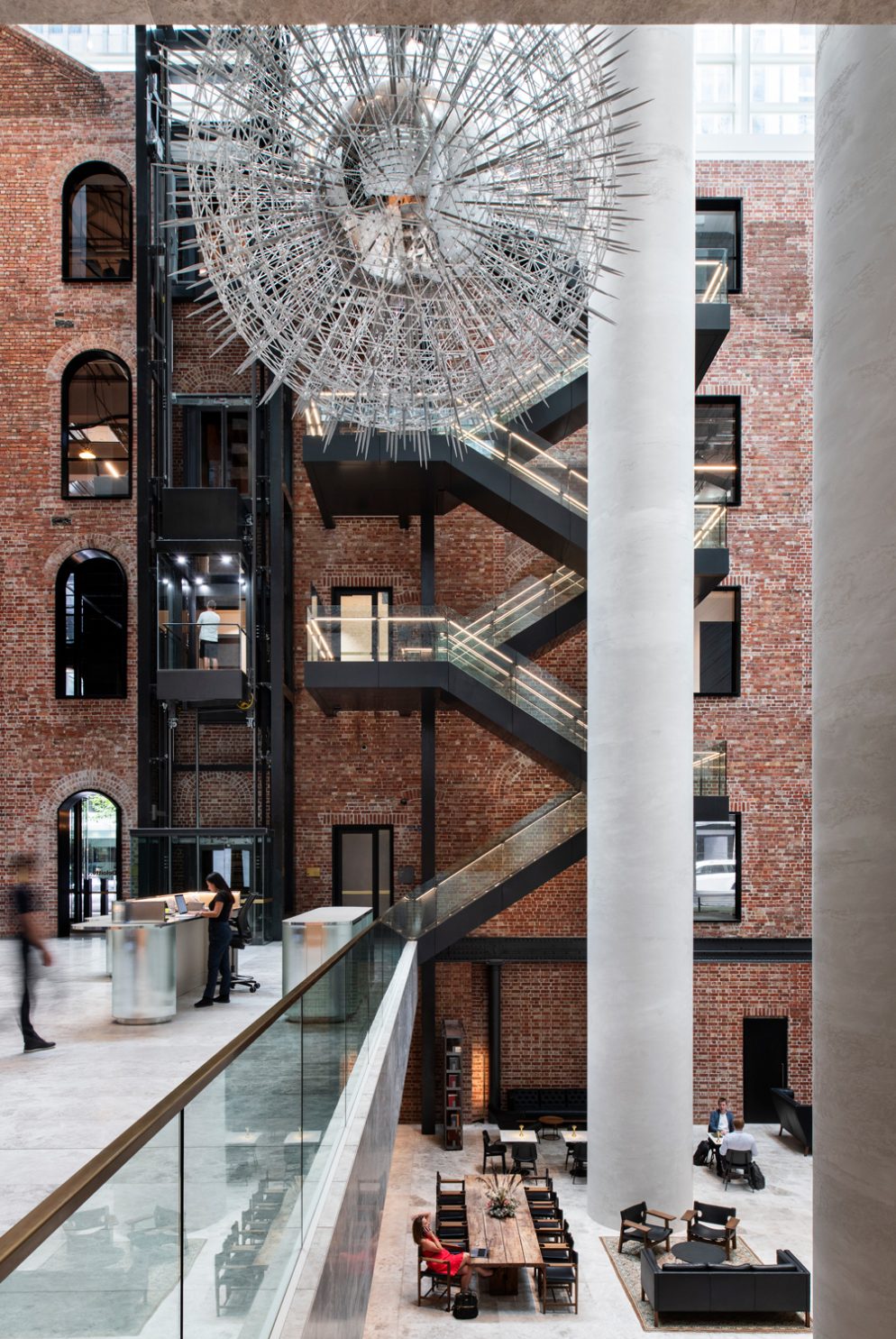
The spherical sculpture, ‘Solar’, by internationally renowned UK-based artist Wolfgang Buttress is suspended with a commanding presence in the open void of the lobby. Harnessing natural light and responding to the rich real-time building data feed of solar radiation as well as the ever-changing shifts of the sun, ‘Solar’ poetically interprets these metrics through its ever-changing lighting display. “Solar’s subtle and ethereal drama creates a sense of wonder and magic through the harmony of art, science, technology and art,” notes Wolfgang Buttress.
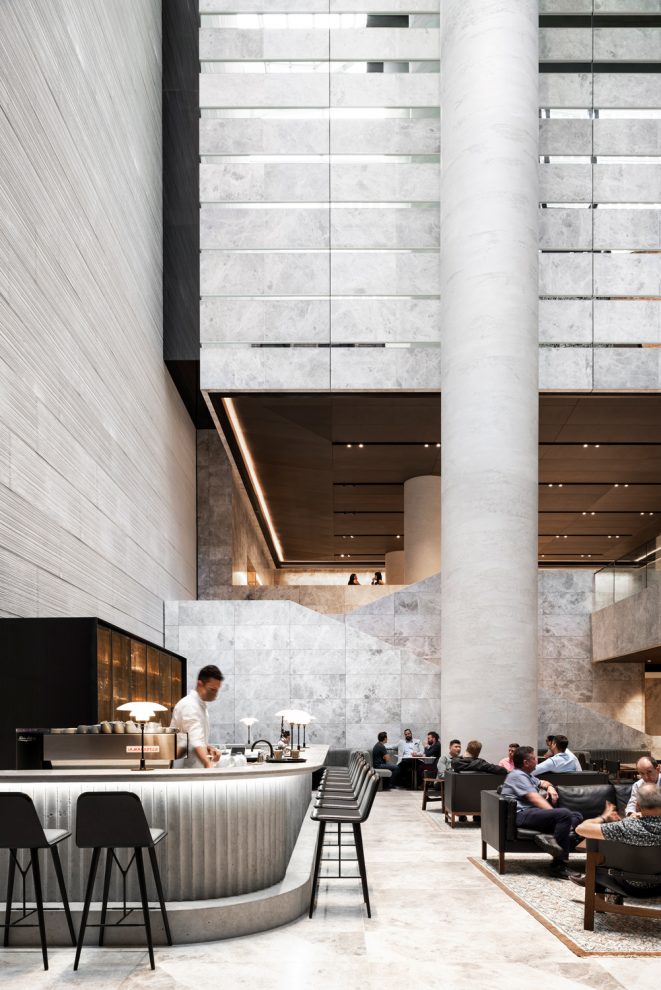
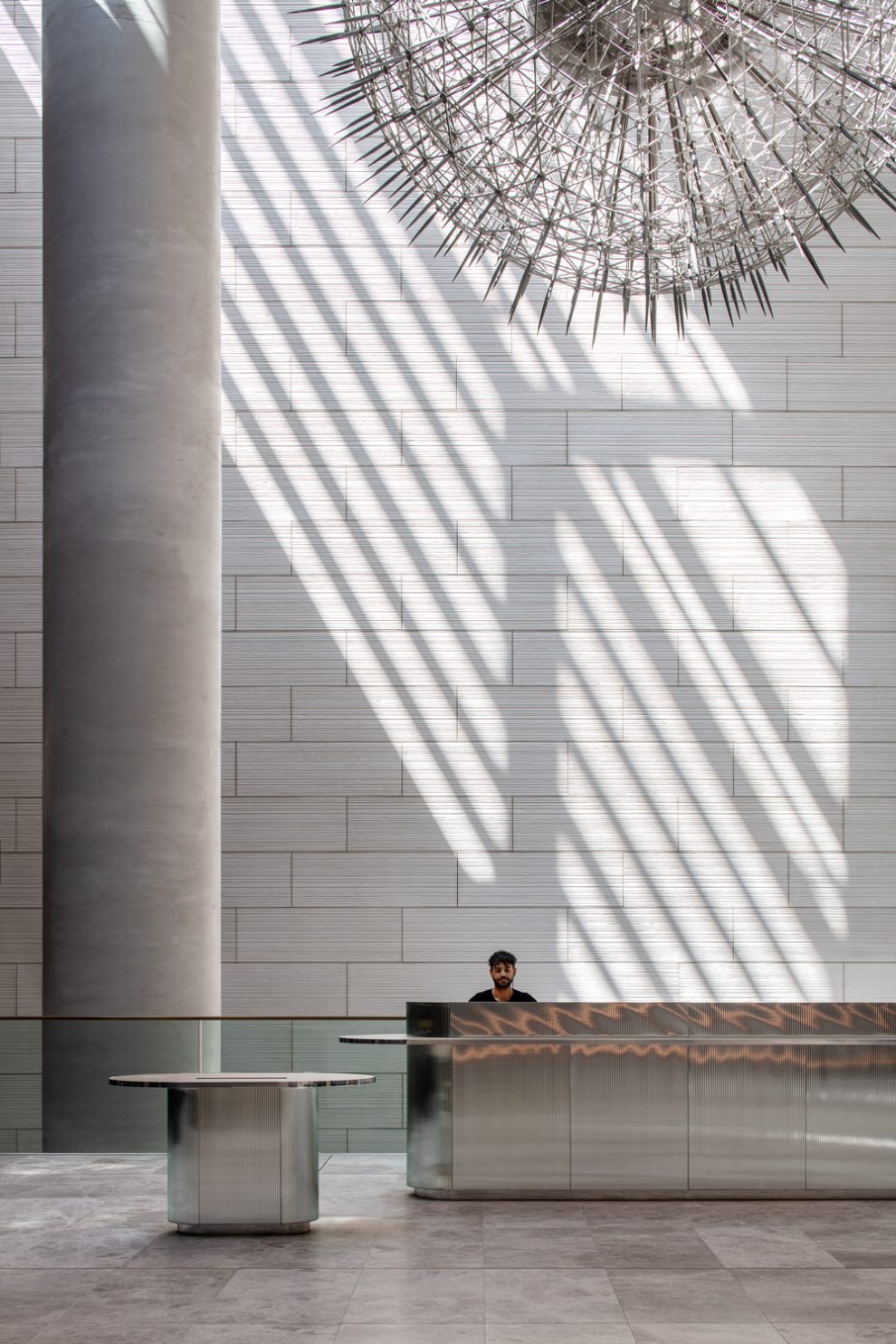
Also influencing the ambience, lighting was carefully considered with different atmospheres created at different points of the day through placement and temperature. In the mornings it shines from above with fresh and cool tones, while in the evenings it is warmer, shining up from below.
The introduction of daylight into the large atrium space behind the heritage frontage enables a connection to the external environment and circadian rhythms, all important aspects in our modern world. Tracking how the light and shadows move and interact with different surfaces at different times throughout the day, and the seasons, further informed the selection of surfaces, materiality, textures and colours.
“Inspired by the existing heritage elements interfacing with the new architecture, our main concept drivers looked to explore the opposing forces between old and new, dark and light, compression and expansion. The combination of these ideas carefully curates a dynamic journey through the compressed entry vestibules into an impressive light-filled lobby activated by natural daylight and multi-sensory artwork” says An Bui.
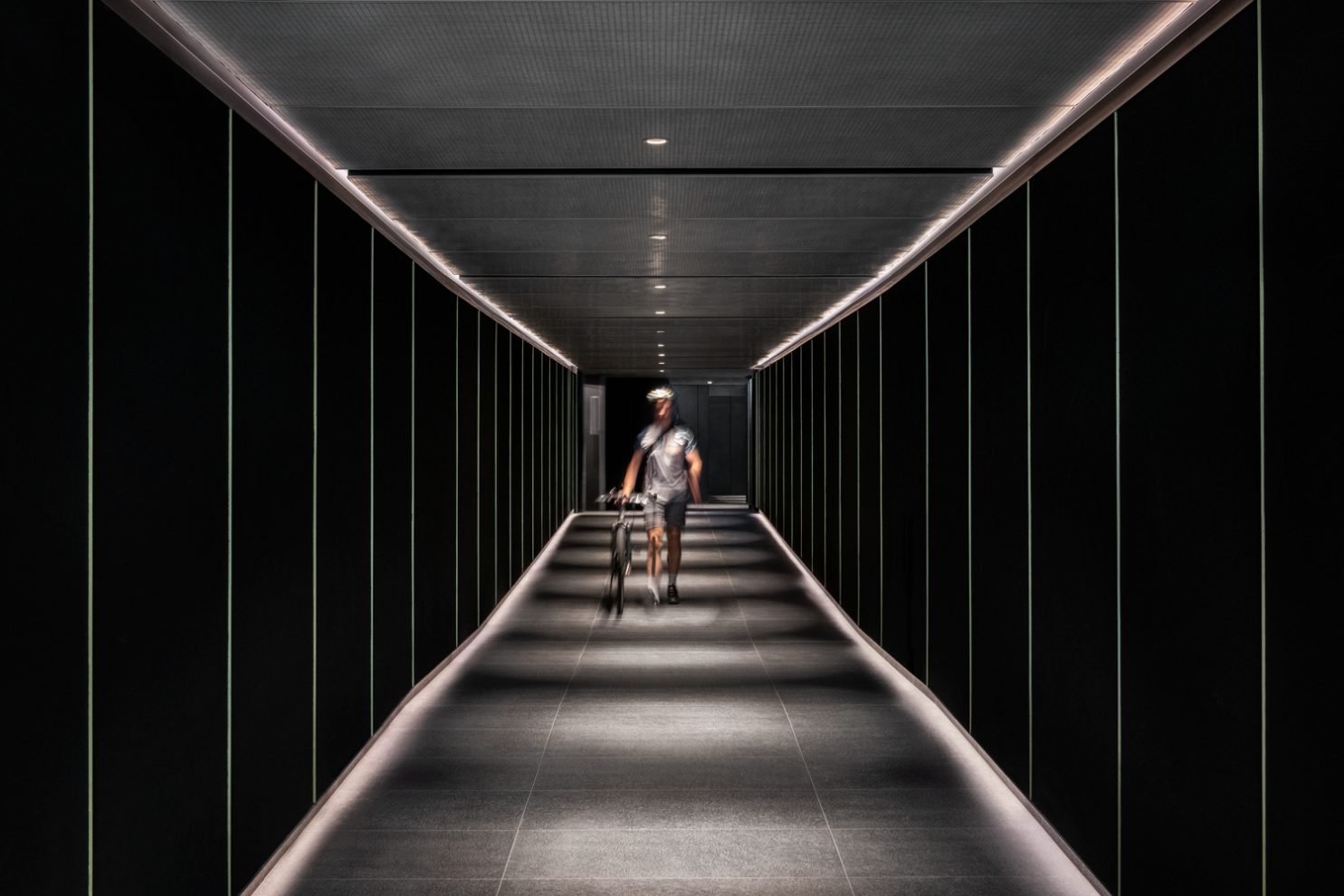
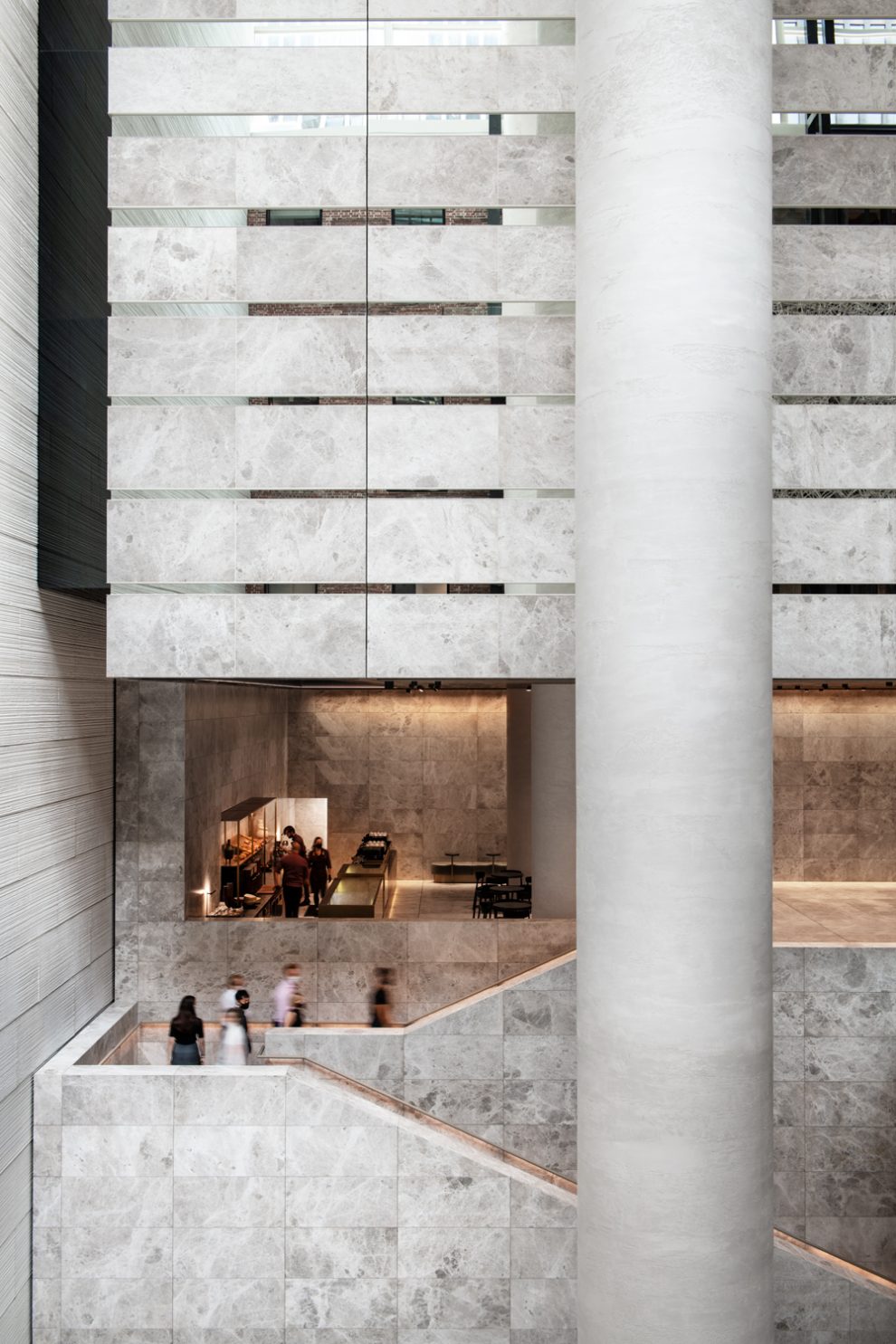
Other interior design considerations bring all the complexities of the design thinking together in a simple but thoughtful manner. For example, a gradation of spliced mirrors breakup the north wall, reflecting the heritage brick opposite, repeating the datum lines used throughout and exaggerating the light at different times of the day, all while rearticulating the ladder frame structure of the tower above.
Olderfleet is an exemplar of modern-day and offers a seamless experience to its mix of tenants, one that is consistent and united under a singular identity.
